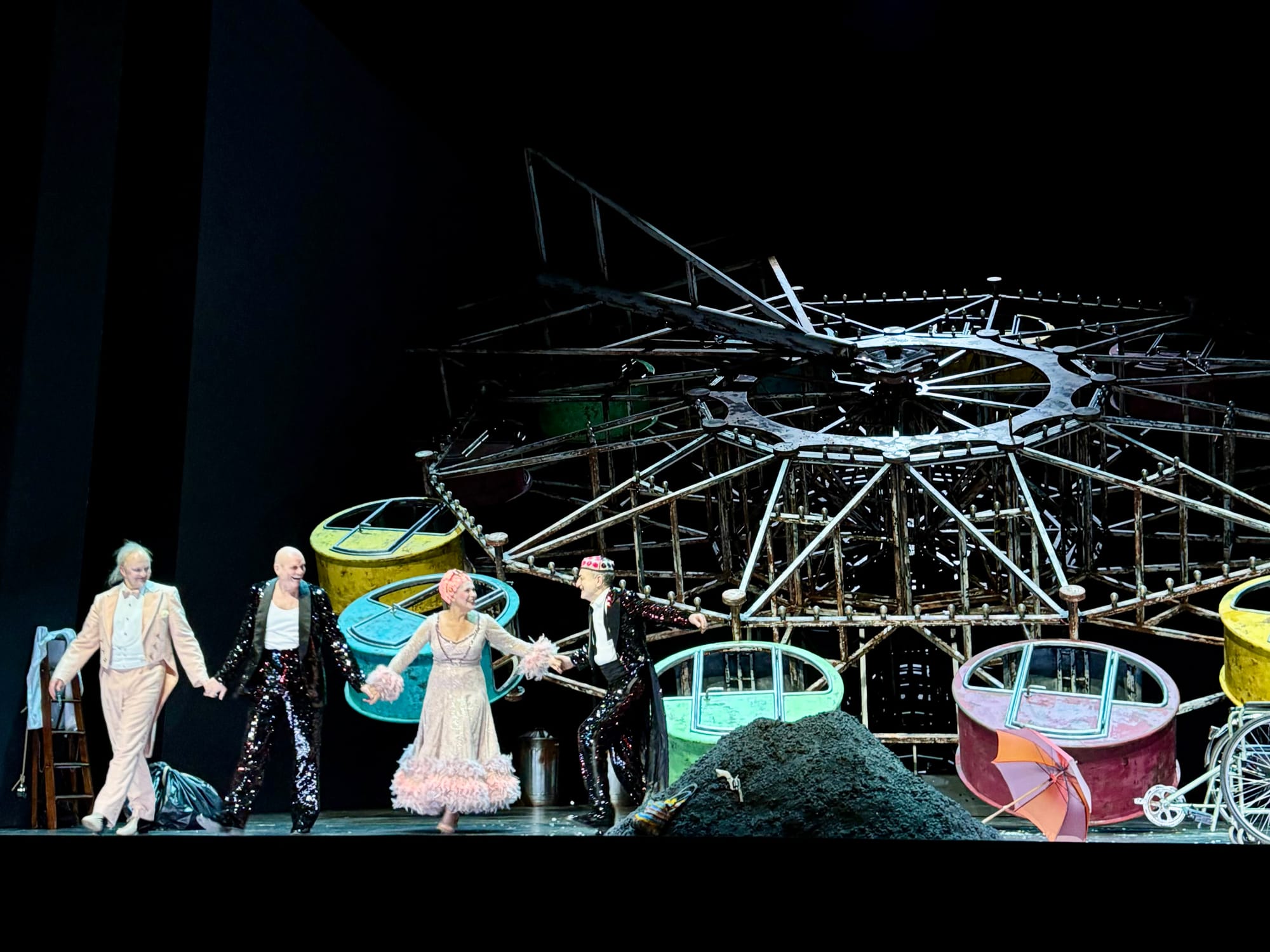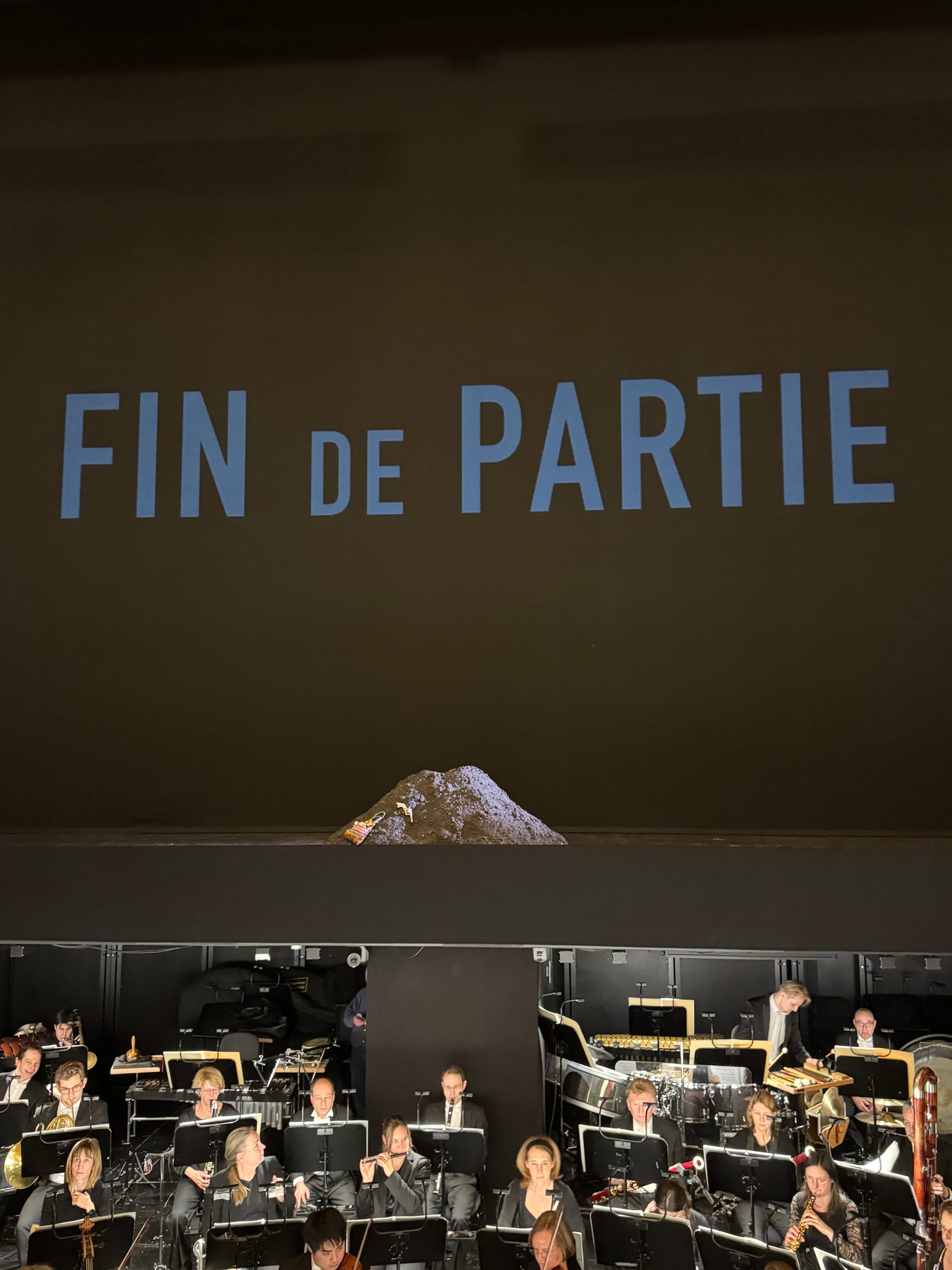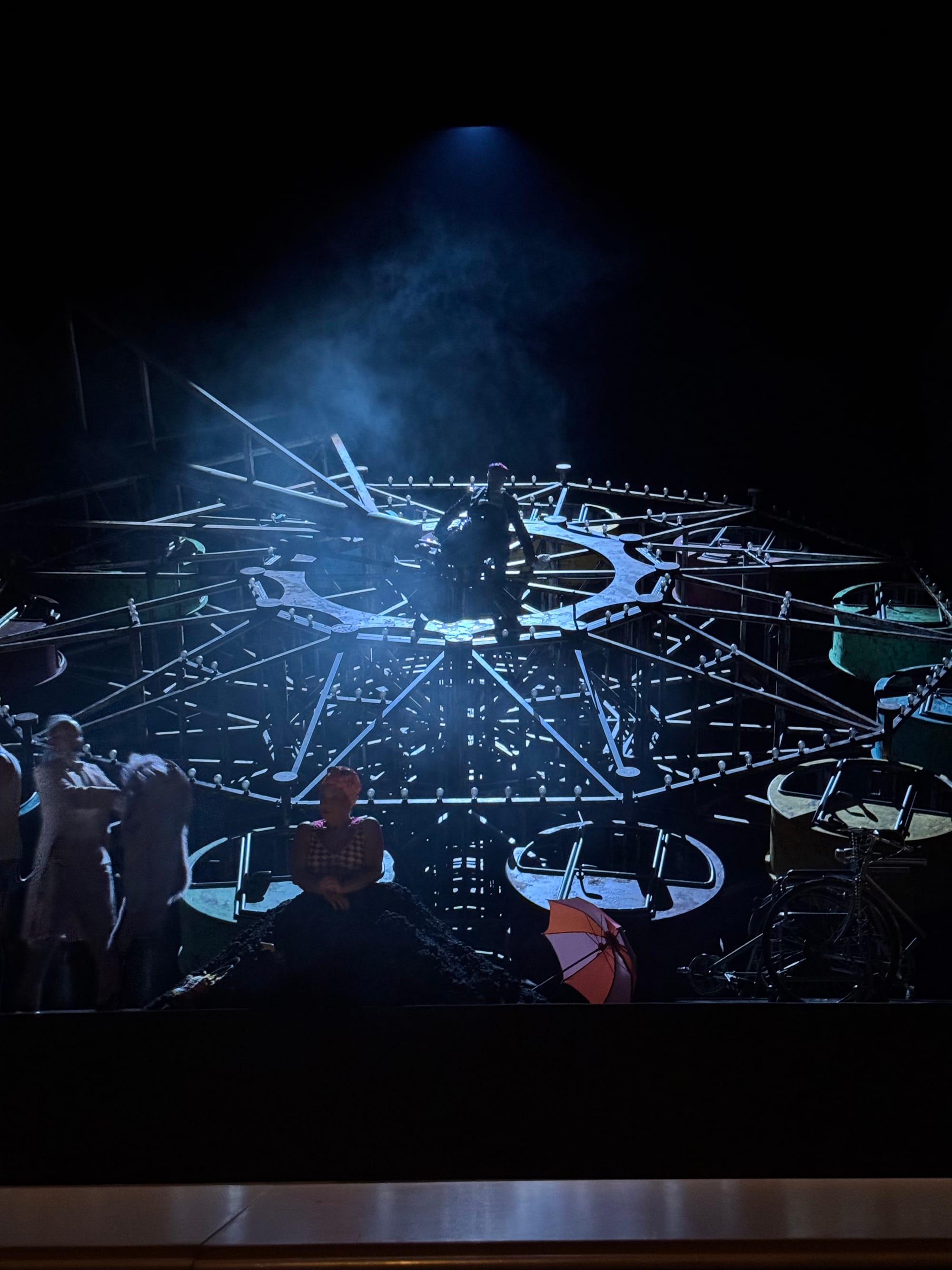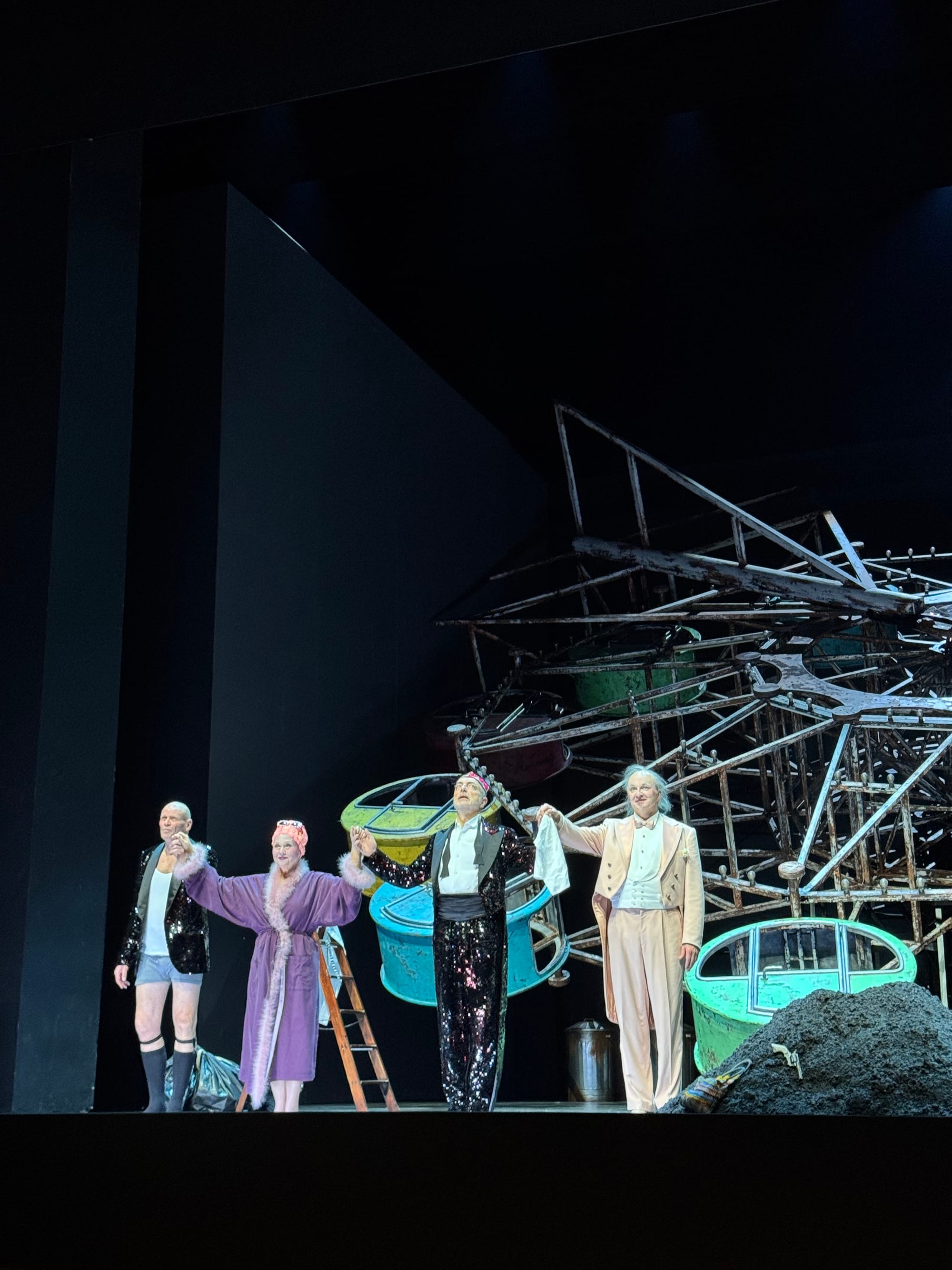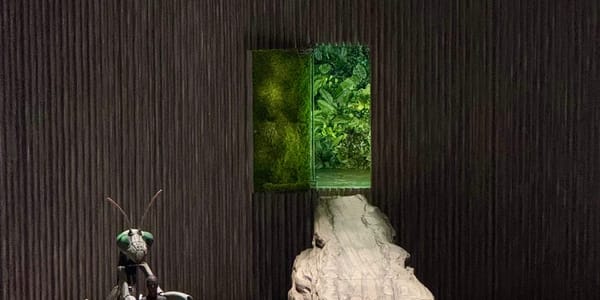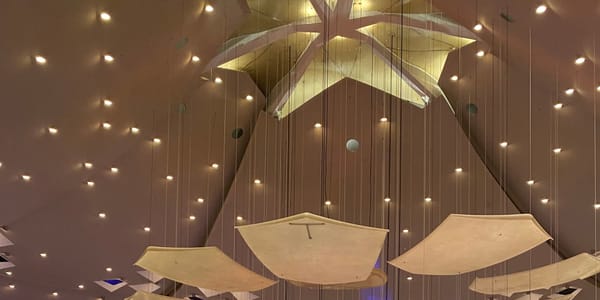Fin de Partie at Staatsoper Berlin
Thematically, FIN DE PARTIE explores the absurdity of life, isolation and dependency, the cyclical nature of existence, and the complex dynamics of physical disability and human relationships.
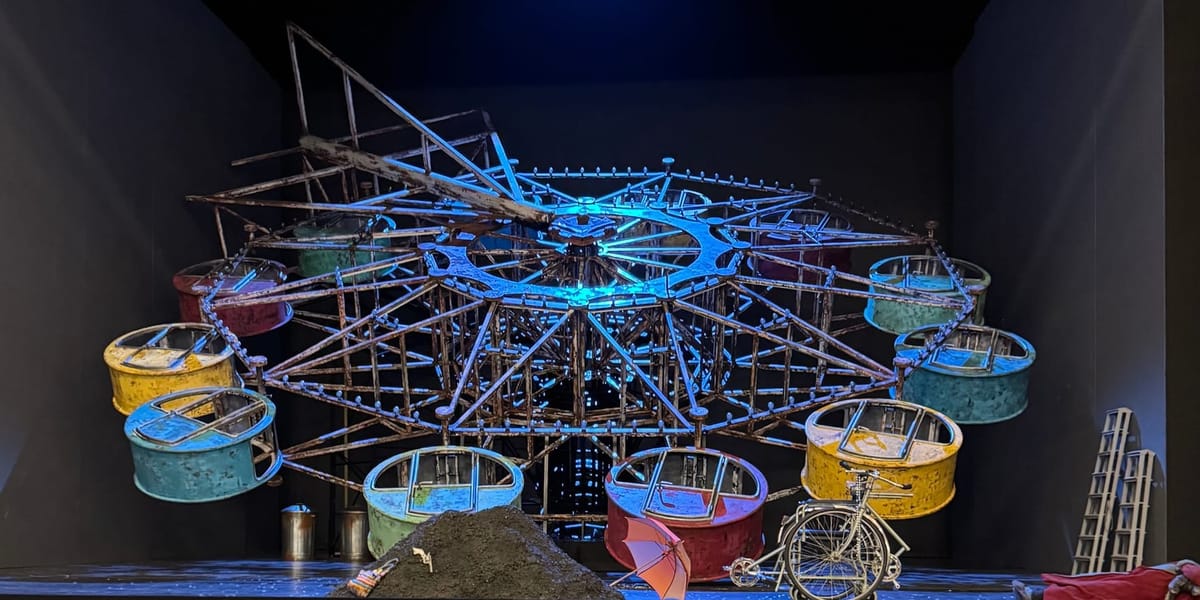
⭐️⭐️
🎭 Fin de Partie
🎶 György Kurtág
💭 Johannes Erath, 2025
🏛️ Staatsoper Unter den Linden Berlin
🗓️ 24.01.2025
As I had supposed, FIN DE PARTIE at Staatsoper Berlin raised more questions than it gave answers, and hence has left me quite thoughtful on how to review this experience. I presume this has multiple reasons: modern operatic composition can be taxing, a story not driven by conventional plot can be difficult to follow, and not informing myself about the background of this piece might have been a beginner‘s mistake.
In fact, only after doing pretty extensive research on this piece am I able to form a somewhat solid opinion on this opera. A recap: FIN DE PARTIE is based on a French absurdist theatre piece of the same name by Samuel Beckett. When Kurtág saw it in the 1950s, it left such a deep impression that he 1/ carried around a copy of the text for the rest of his life, and 2/ wrote an opera with the libretto over half a century later, when commissioned by La Scala in 2018.
Thematically, FIN DE PARTIE explores the absurdity of life, isolation and dependency, the cyclical nature of existence, and the complex dynamics of physical disability and human relationships. The “plot” revolves around four characters: a blind man in a wheelchair, his disabled parents (who lost their legs in a bike accident and now live in trash cans), and their servant. In 14 scenes, their interpersonal dynamics and background are revealed—as is the tension and conflict between them. There‘s lots of reminiscing about the past, anecdotal and imaginative storytelling (of which we don‘t know what is made up and what is real), and awkward and petty dynamics.
This absurd and desolate world is brought to life in a visually striking staging: film projections mirror the onstage acting, curtain cutouts magnify key moments, layered sets add depth, and an overall arthouse vibe emphasizes the sparse, haunting score. In the final climax, a ferris wheel toppled over on its tide starts eerily turning, with carnival lights blinking ominously (in fact, I spent the whole last part wondering and “doing the math” if it might be able to turn).
On a thoughtful note, FIN DE PARTIE has reinforced my ambivalent perspective on modern operas. On one hand, I appreciate them as an art form expressive of disturbing, uncomfortable truths, with a purpose of evoking just that in an audience. On the other hand, I unfortunately find the music to be unenjoyable. As with a lot of contemporary art, being knowledgeable on the context of a piece and the background of its artist significantly strengthen its impact and understanding. And yet I wonder: when will a modern opera, of which I know nothing about, move me in the way that Tosca did when I first heard it?
Ultimately, at the first impression, FIN DE PARTIE feels overwhelming, confusing, and difficult—several members of the audience couldn’t seem to bear it and snuck out early. However, with some time to process and digest it, FIN DE PARTIE becomes a profound reflection on isolation and interdependence, on absurdity and vulnerability. It turns out that this opera is as visually captivating as it is emotionally resonant!
